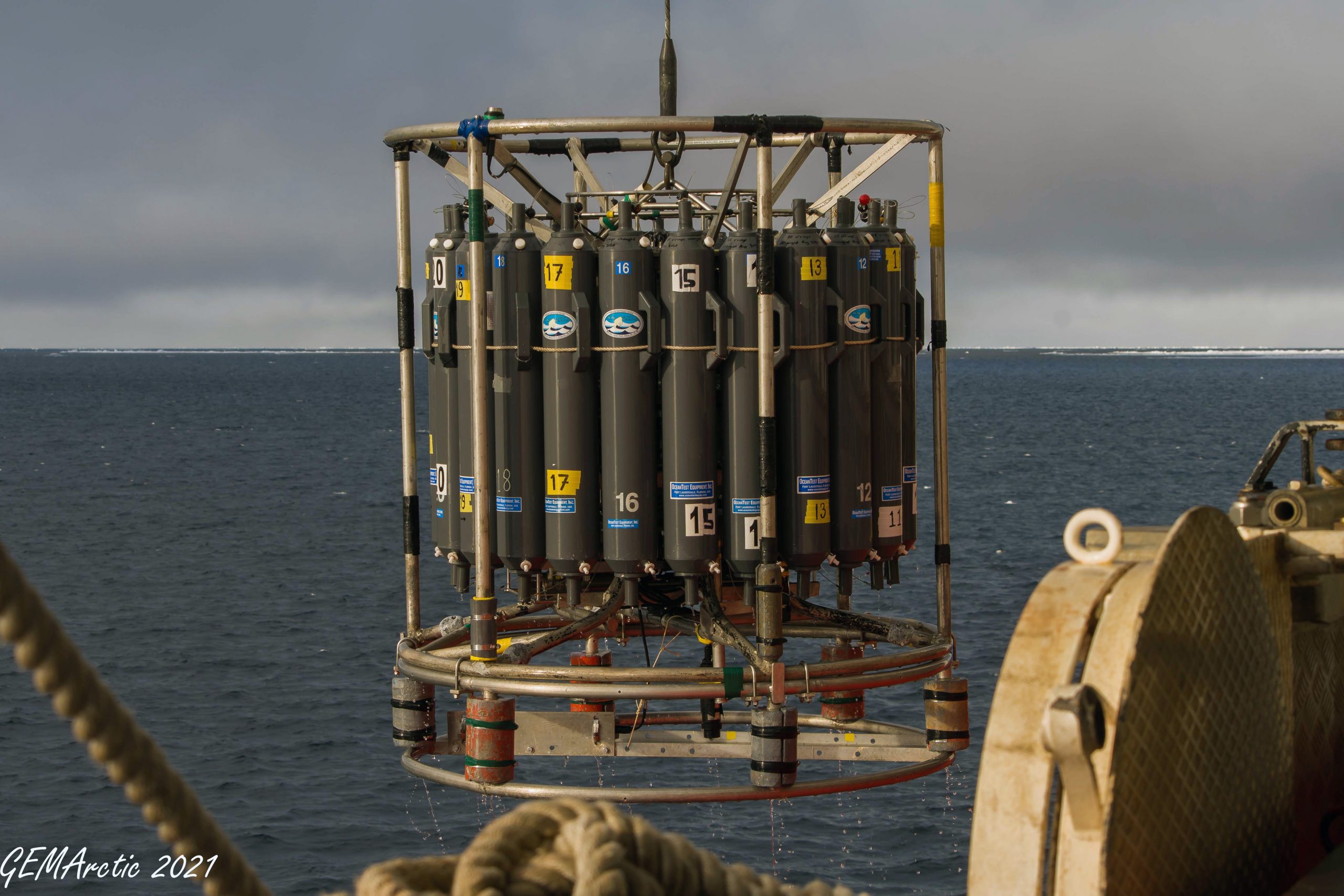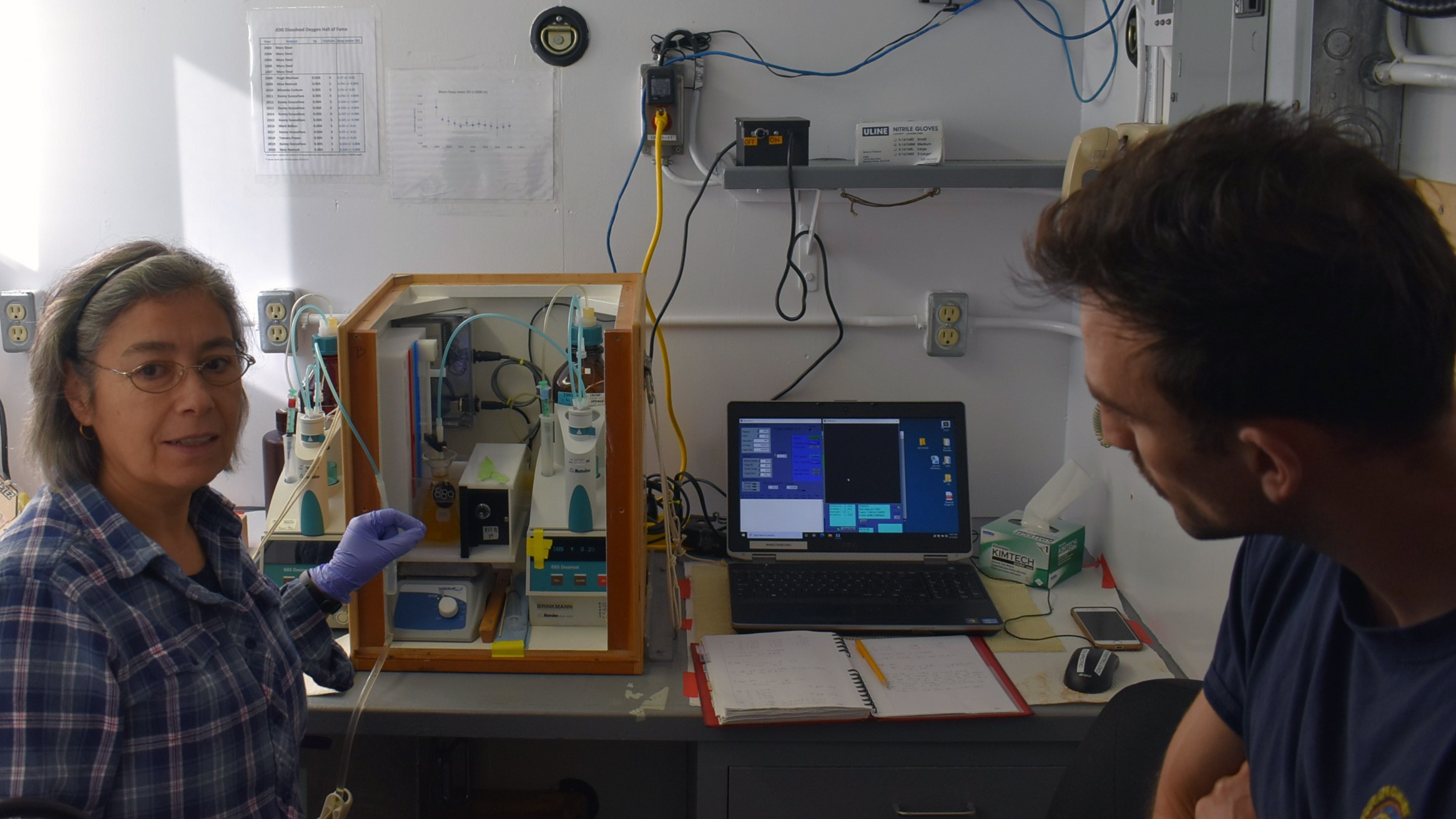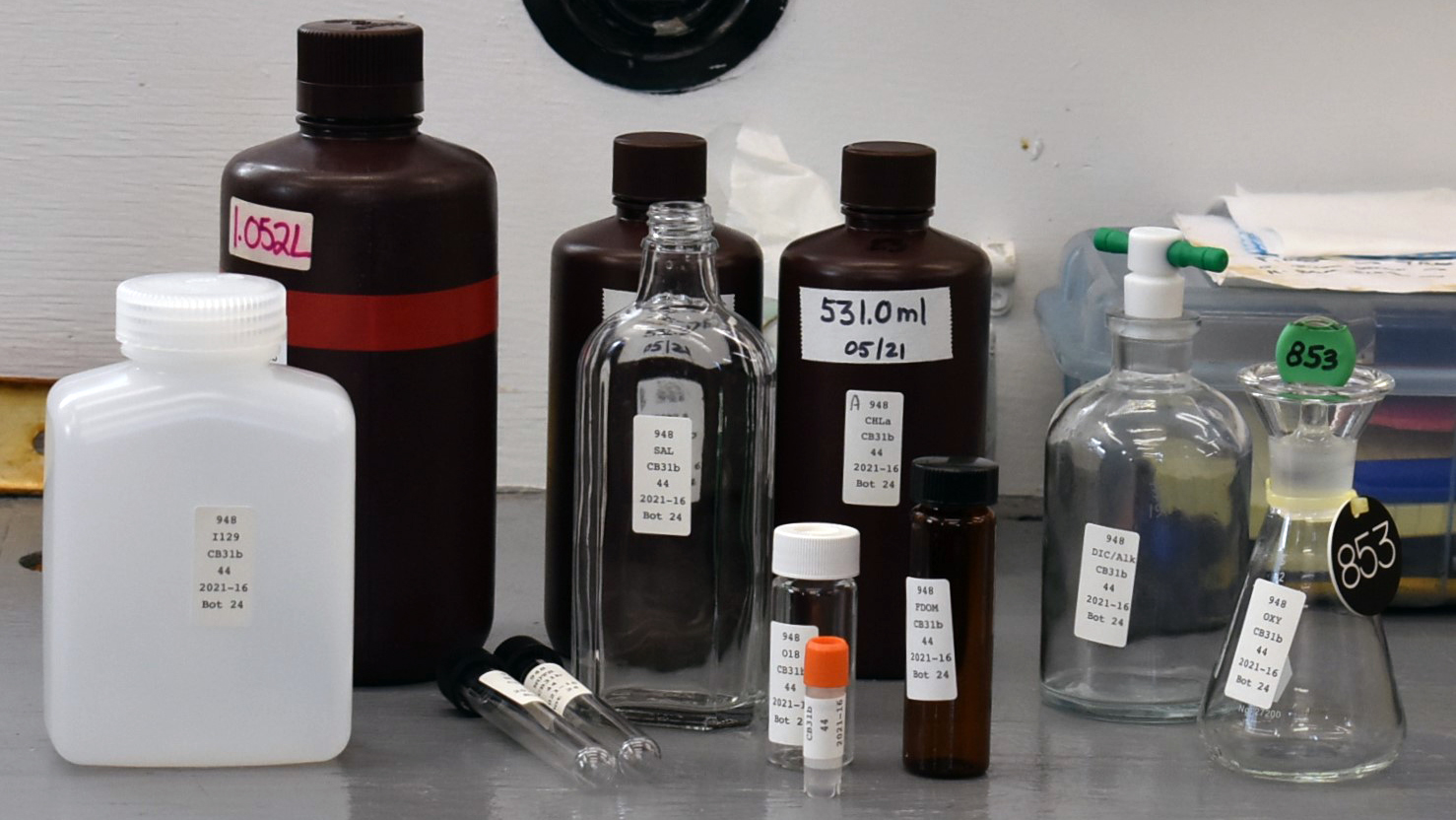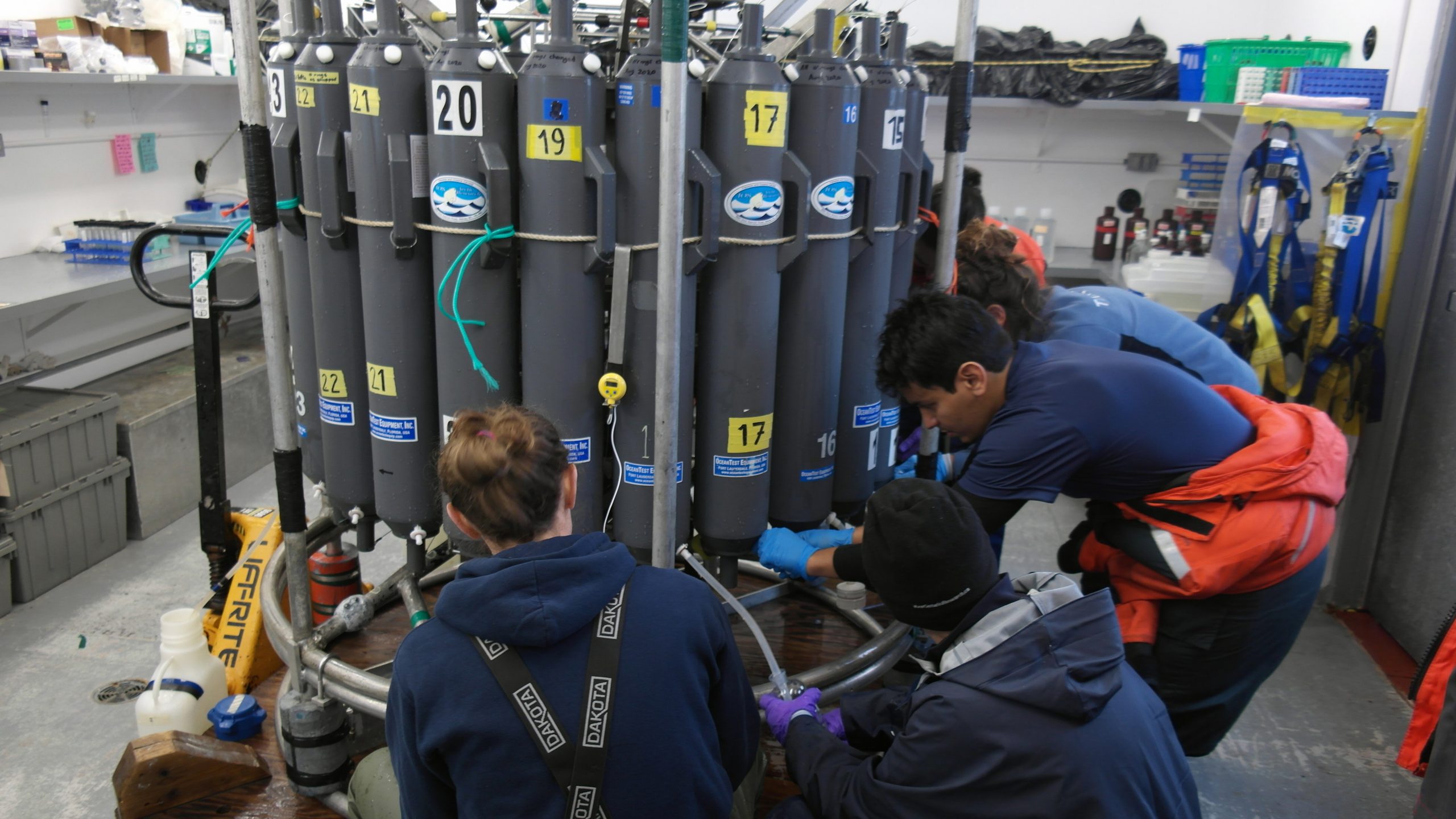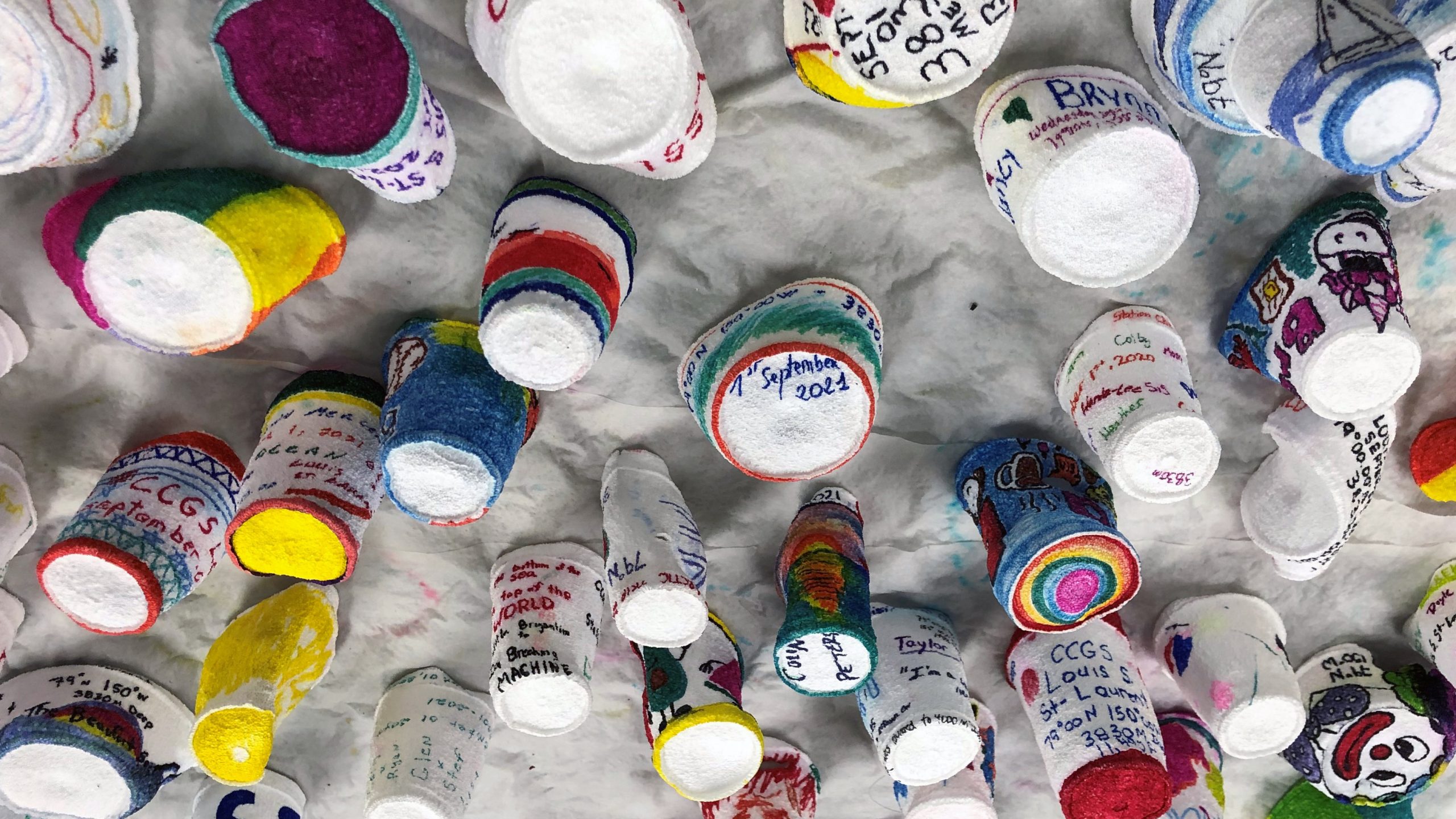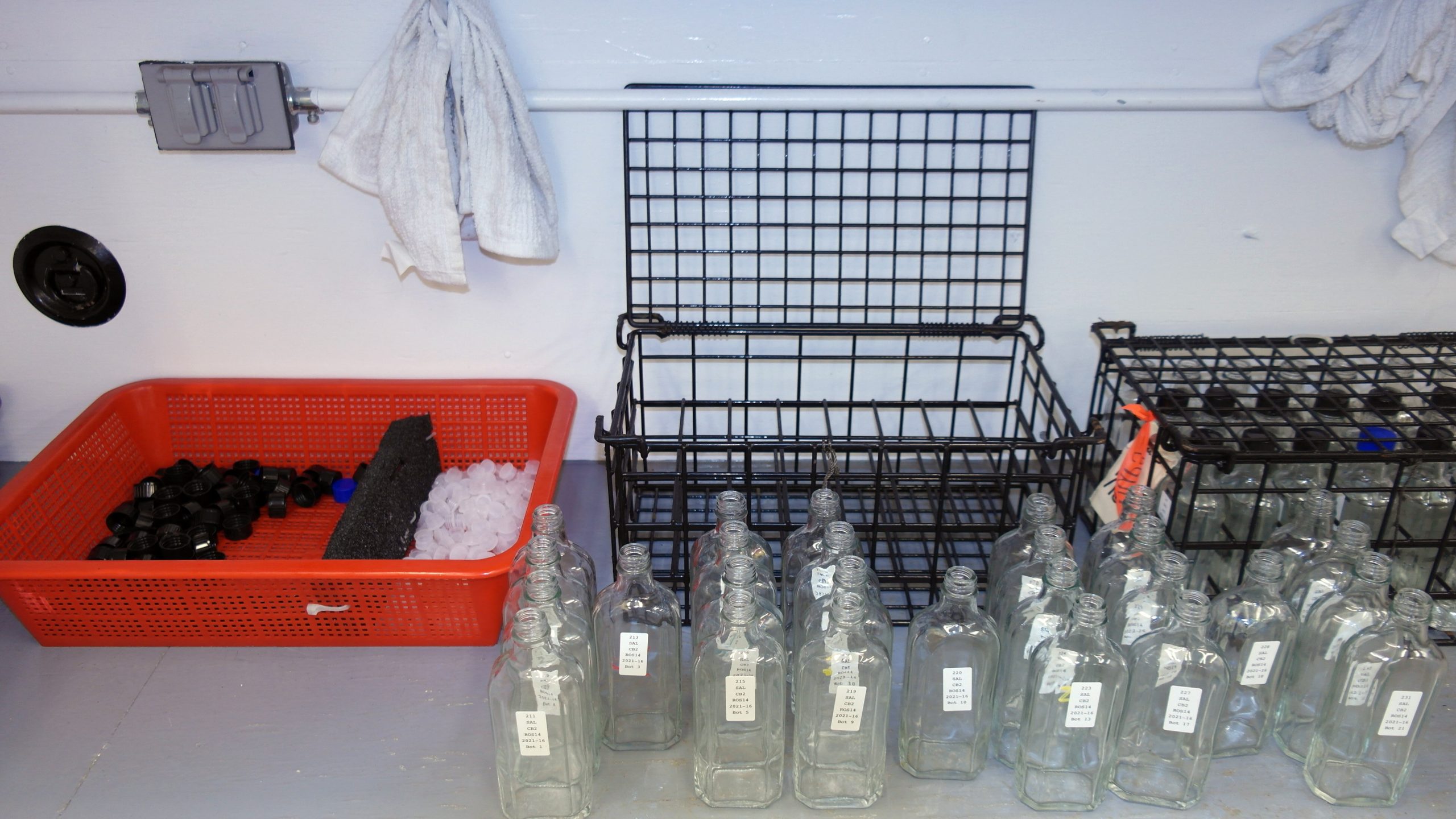Dispatch 21: Sampling at Sea - The CTD Rosette
Helen Gemmrich
September 12, 2021
“Delivery for Marty!” My bright yellow overalls swish together as I carry yet another green shopping basket of seawater samples from the CTD rosette to the labs. We are now sampling along the “MK Line,” moving quickly towards the Mackenzie River outflow. The CTD rosette stations are getting shallower and closer together (the last station is only 60 meters deep!), and the Louis’ labs seem busier than usual as we wrap up our last few science stations on this trip.
In addition to DOM, DNA, and ice core samples (see Dispatches 8, 11, and 13), the science team collects seawater samples to measure ocean acidification, chlorophyll, salinity, oxygen, and nutrients in the Beaufort Sea. Each time the CTD rosette returns to deck from a dive, weighed down by up to 240 litres of seawater, the CTD Watch team pulls on their lab gloves and cranks up the tunes, ready to siphon off some 100-150 samples for processing on board.
We sample in a specific order: we always start with oxygen and dissolved inorganic carbon (DIC), since these dissolved gas samples are most vulnerable to mixing with the same gases in the atmosphere. Bacteria and DOM are next in line, followed by chlorophyll and nutrients. Chlorophyll, for example, will multiply when exposed to light and the oxygen in the air around us, so these samples are stored in dark brown bottles and filled to the brim. Salinity and tracer samples (for example barium, iodine-129, and the O18 oxygen isotope) are least sensitive to the environment and are sampled last.
Once we’ve filled up the individual bottles, they get delivered to their respective lab and analyst. Sarah Ann Quesnel is our lab supervisor and nutrients expert. Differently shaped flasks and neatly labelled chemicals populate her lab space alongside the deionized (“very pure”) water maker and an automated sampling machine. Whirring quietly, the machine methodically samples each vial in the rows of test tubes before spitting out a stack of spreadsheets on the water’s nutrient content (for example nitrates, phosphates, and silicates) for Sarah Ann.
Dissolved oxygen samples go to Angelica Pena. By the end of the cruise, she will have processed roughly 14,000 samples! Angelica also prepares samples for high-performance liquid chromatography (HPLC), which will allow her to identify and quantify different components in the seawater sample from her home lab. HPLC samples are trapped on a filter (like the DNA team’s samples or chlorophyll samples) and stored at -80 C.
Chris Clarke, Kristina Brown, and Benjamin Richaud make up our salts team. They share a tiny container lab with a temperamental salinometer, stacked cases of seawater samples, and occasionally, Angelica and the oxygen boxes. It takes seven steps to get a single salinity value: after filling the glass sampling bottle from the rosette and sealing it with both an insert and a cap to avoid any water evaporation, the seawater must first come to room temperature. To ensure the machine’s values didn’t drift since its last use, the team tests the salinometer with reference water before rinsing its four conductivity cells three times with sample water (keeping an eye out for bubbles!). They then take 12 conductivity measurements (three per cell) and, finally, convert the values into salinity. With at least 24 salinity samples to process from each rosette cast, it’s no wonder Chris can usually be found working in the Salt Shack!
Another scientist who seems to work around the clock is Marty Davelaar. Through a complex system of tiny tubes and mini chemical reactions, Marty’s setup helps determine the amount of dissolved inorganic carbon and the alkalinity of the seawater (its capacity to buffer changes in the ocean’s acidity). This is important since both DIC and alkalinity affect the ocean’s carbon uptake and carbon pump, which moves organic carbon from the upper ocean to the deep ocean. Rising acidity in the oceans also contributes to a variety of marine zoological issues in invertebrates and vertebrates alike.
